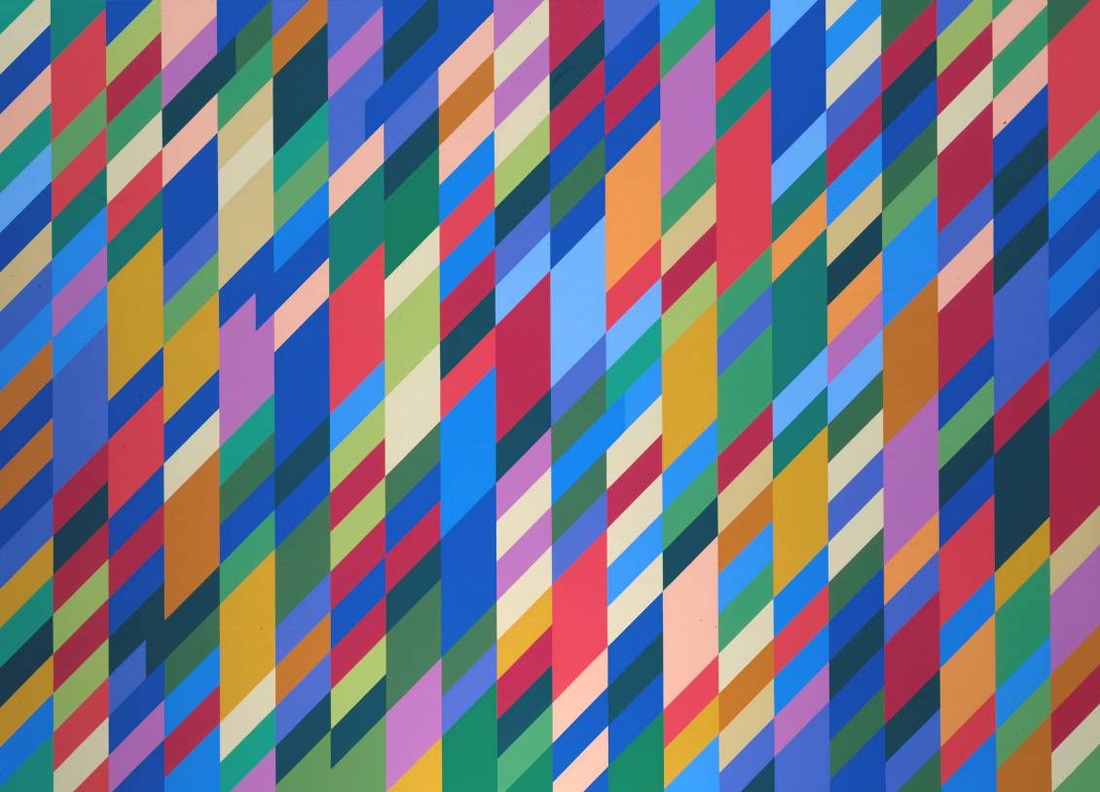This piece is very interesting to me not only through the use of geometric shape and the juxta-positioning of the hues, but the concept and name of the piece is interesting. The piece itself is named after a term that derives from Hindu mythology, which means "Lord of the Dance". The term relates to the Hindu god Siva (or Shiva) who was a cosmic dancer. In the Hindu religion, Siva was symbolic and representational (and still is) of the cause or source for movement of and within the entire universe. The use of the term in Riley's work refers to her use of rhythm and movement created through the repetition of the geometrical shapes, as well as the repetition of similar or the same hues throughout the piece, and the creation of lines through the positioning of the shapes (or vice versa - lines that were made created the shapes). There is also a feeling of unity created through the repetition of the shapes, as well as the colors. I really admire this piece for the fact that is creates movement on a surface in a two-dimensional way, and I also am really drawn to the title, where the title originated from and how it adds significance to the piece. There is also a high contrast overall that is created through the harsh lines that clash with each other, as well as the harshness of the colors and the idea that they do not blend together, which I think is very contemporary, yet adds a lot of character to this piece.
Image derived from: Riley, Bridget. Nataraja. 2006. Painting. TateWeb. 28 Oct 2013. <http://www.tate.org.uk/art/artworks/riley-nataraja-t06859>.
Image derived from: Riley, Bridget. Nataraja. 2006. Painting. TateWeb. 28 Oct 2013. <http://www.tate.org.uk/art/artworks/riley-nataraja-t06859>.

 RSS Feed
RSS Feed